The Ultimate Guide to Blennies Fish Tank Size

In the captivating world of aquarium keeping, blennies emerge as fascinating inhabitants known for their unique behaviors and vibrant personalities. As aquarists embark on the journey of nurturing these charismatic fish within the confines of an aquarium, the significance of selecting an appropriate tank size cannot be overstated. The right tank size is paramount in ensuring the well-being and thriving environment for blennies, mirroring their natural habitat and allowing for adequate space for growth and exploration.
In this comprehensive guide, we delve into the intricacies of determining the optimal tank size for blennies, considering various factors such as species, compatibility, and future growth, thus providing invaluable insights for enthusiasts seeking to create thriving aquatic ecosystems for their beloved aquatic companions.
Understanding Blennies
Species Overview
Blennies belong to the family Blenniidae, comprising a diverse group of small to medium-sized fish found in various marine environments worldwide. With their elongated bodies, distinctive facial features, and often vibrant colors, blennies captivate aquarium enthusiasts and marine biologists alike.

Natural Habitat
Blennies are predominantly found in coastal areas, inhabiting rocky reefs, tide pools, and shallow waters with ample hiding spots. Their natural habitats often feature crevices, caves, and algae-rich substrates, providing them with shelter and foraging opportunities.
Behavior and Characteristics
Blennies exhibit fascinating behaviors, ranging from grazing on algae and detritus to engaging in territorial displays and courtship rituals. Many species are known for their perching behavior, using their pelvic fins to anchor themselves to rocks or substrate. Additionally, blennies are adept jumpers and may leap out of open aquariums if not provided with adequate cover.
Preferred Living Conditions
Replicating the natural environment of blennies in captivity is crucial for their well-being and health. Aquarium setups should include rocky structures, live rock formations, and ample hiding places to mimic their natural habitat. Additionally, maintaining stable water parameters, including temperature, pH, and salinity, is essential for ensuring their longevity and vitality.
Significance of Natural Environment Replication
Emphasizing the importance of replicating their natural environment in captivity cannot be overstated. By providing a habitat that closely resembles their native surroundings, aquarists can reduce stress levels, encourage natural behaviors, and promote overall well-being in blennies. A well-designed aquarium not only enhances the aesthetic appeal but also fosters a thriving ecosystem where blennies can flourish.
In summary, understanding the natural habitat, behavior, and preferred living conditions of blennies is essential for creating a suitable environment in captivity. By incorporating elements that mirror their native surroundings, aquarists can provide a conducive habitat for these captivating fish, fostering their health, happiness, and natural behaviors in the aquarium setting.
Factors Influencing Tank Size
Size and Species of Blennies
Different species of blennies vary in size and behavior, consequently influencing their space requirements within an aquarium. While some species, such as the Bicolor Blenny, may thrive in smaller tank sizes like nano tanks, others like the Sailfin Blenny require larger tanks to accommodate their territorial nature and potential growth.
Compatibility with Other Tank Inhabitants
When considering tank size for blennies, it’s crucial to account for compatibility with other tank mates. Adequate space is essential to prevent overcrowding and territorial disputes, especially in multi-species aquarium setups. Providing ample room for each fish to establish territories and coexist peacefully promotes a harmonious aquatic environment.
Filtration and Water Quality
The size of the aquarium directly impacts its filtration capacity and water quality. Larger tanks inherently offer greater water volume, diluting toxins and providing a more stable environment. Sufficient filtration is necessary to maintain optimal water parameters, ensuring the health and well-being of blennies and other tank inhabitants.
Future Growth Considerations
As blennies mature, they may undergo significant growth, necessitating adequate room to accommodate their increasing size. Aquarists should anticipate the potential growth of blennies and select a tank size that allows for ample swimming space and territorial behavior without restricting their movement. Planning for future growth mitigates the need for frequent tank upgrades and supports the long-term health and happiness of the fish.
In conclusion, several factors influence the appropriate tank size for housing blennies in an aquarium. Considering the size and species of blennies, compatibility with other tank inhabitants, filtration capacity, and future growth considerations is essential for creating a conducive environment that promotes the well-being and thriving behavior of these captivating marine fish. By addressing these factors thoughtfully, aquarists can establish a balanced and sustainable aquarium ecosystem for their blennies to flourish.
Recommended Tank Sizes
Nano Tanks (10-20 gallons)
Nano tanks are suitable for smaller blenny species and single specimens due to their compact size and limited swimming space. Species like the Tailspot Blenny or the Clown Blenny thrive in these smaller setups, where they can comfortably explore and establish territories within the confined space. However, it’s crucial to ensure proper filtration and water quality maintenance in nano tanks to prevent the buildup of toxins and maintain a healthy environment for the blennies.
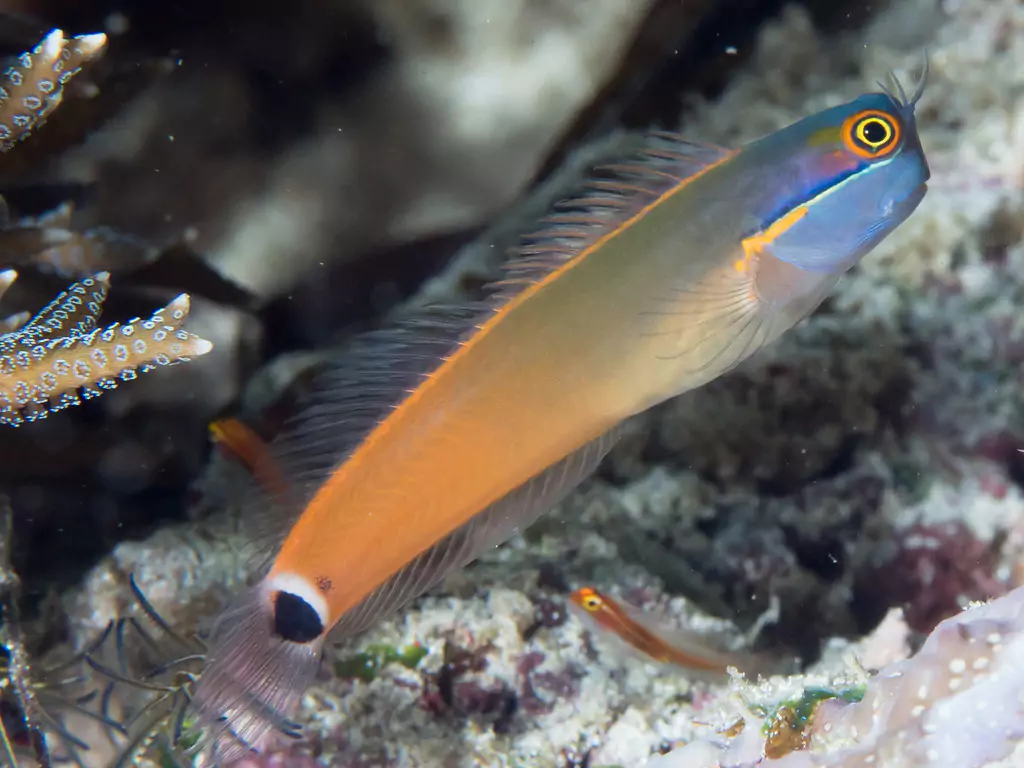
Mid-sized Tanks (30-50 gallons)
Mid-sized tanks offer increased space and versatility, making them ideal for housing multiple blennies or accommodating larger species. With a tank capacity ranging from 30 to 50 gallons, these setups provide ample room for blennies to exhibit natural behaviors while coexisting with compatible tank mates. Aquarists can create dynamic communities by introducing various blenny species or incorporating other marine inhabitants like gobies, clownfish, or small reef invertebrates, fostering a vibrant and diverse aquatic ecosystem.
Large Tanks (75+ gallons)
Large tanks, with capacities of 75 gallons or more, are recommended for keeping larger blenny species or establishing mixed species tanks. Species such as the Lawnmower Blenny or the Midas Blenny, known for their robust size and territorial behavior, benefit from the expansive swimming space and ample hiding spots provided by large aquariums. Additionally, large tanks offer greater stability in water parameters and facilitate the establishment of complex aquascapes, including extensive rockwork, live corals, and diverse marine life. Aquarists can create stunning displays while ensuring the comfort and well-being of their blennies and other tank inhabitants in these spacious setups.
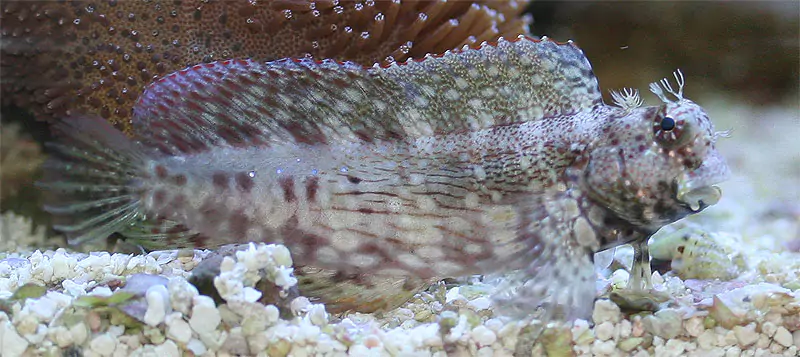
In summary, selecting the appropriate tank size is essential for providing a suitable habitat for blennies in an aquarium. Whether opting for a nano tank, mid-sized tank, or large tank, aquarists should consider the specific needs of their blenny species, compatibility with other tank mates, and future growth potential to create a thriving and harmonious aquatic environment. By choosing the right tank size, aquarists can enhance the well-being and enjoyment of their blennies while cultivating a captivating underwater ecosystem for all to appreciate.
Tank Setup Tips
Substrate and Hiding Places
Ensuring the presence of adequate hiding spots and a suitable substrate is essential for creating a comfortable and stimulating environment for blennies. Incorporate live rock formations, caves, and crevices to offer shelter and security for these reclusive fish. Additionally, choose a fine sand substrate to accommodate burrowing behaviors exhibited by certain blenny species, such as the Scooter Blenny or the Redlip Blenny. Providing ample hiding places mimics their natural habitat and helps reduce stress, promoting natural behaviors and overall well-being.
Rockwork and Décor
To replicate the diverse and intricate environments inhabited by blennies in the wild, aim to create a varied aquascape within the aquarium. Arrange live rock structures to form caves, ledges, and overhangs, providing vertical and horizontal surfaces for exploration and perching. Incorporate a variety of textures, shapes, and colors to stimulate visual interest and encourage natural behaviors, such as grazing and territorial marking. By mimicking their natural habitat through thoughtfully arranged rockwork and décor, aquarists can create a dynamic and enriching environment that promotes the health and vitality of blennies.
Water Parameters
Maintaining optimal water quality and conditions is paramount for the health and well-being of blennies in the aquarium. Monitor and regulate key parameters such as temperature, pH, salinity, and ammonia levels to create a stable and supportive aquatic environment. For marine setups, aim for a temperature range of 75-82°F (24-28°C), a pH level between 8.1-8.4, and a salinity of 1.020-1.025. Regular water testing and quality control measures, including routine water changes and proper filtration, are essential for ensuring a clean and hospitable habitat for blennies and other tank inhabitants.
In summary, implementing these tank setup tips is crucial for establishing a thriving and harmonious environment for blennies in the aquarium. By providing ample hiding spots and suitable substrate, creating a diverse aquascape with rockwork and décor, and maintaining optimal water parameters, aquarists can create a stimulating and supportive habitat that mirrors the natural environment of blennies, promoting their health, happiness, and natural behaviors.
Common Mistakes to Avoid
Choosing an Undersized Tank
Opting for an undersized tank poses significant risks to the well-being of blennies and other aquarium inhabitants. Insufficient space restricts their natural behaviors, leading to stress, aggression, and territorial conflicts. Additionally, overcrowding in a small tank exacerbates water quality issues, as waste accumulates more rapidly, posing a threat to fish health. Aquarists should prioritize selecting an appropriately sized tank that accommodates the space requirements of blennies and allows for adequate swimming room and territorial establishment.
Overcrowding the Tank
Overcrowding the aquarium with too many fish or incompatible species can have detrimental effects on water quality and fish health. In a crowded environment, competition for resources intensifies, leading to increased aggression, territorial disputes, and elevated stress levels among tank inhabitants. Moreover, excessive bio-load from overcrowding contributes to rapid fluctuations in water parameters, compromising water quality and increasing the risk of disease outbreaks. Aquarists should exercise caution and maintain appropriate stocking levels to prevent overcrowding and promote a balanced ecosystem within the aquarium.
Neglecting Maintenance
Neglecting regular maintenance tasks, such as cleaning and water changes, can have dire consequences for the health and longevity of blennies and other aquatic inhabitants. Accumulated waste, uneaten food, and decaying organic matter contribute to ammonia spikes, nitrate buildup, and deteriorating water quality, posing serious health risks to fish. Additionally, neglecting to perform routine water changes deprives fish of essential nutrients and oxygen, leading to stress and weakened immune systems. Aquarists must prioritize consistent maintenance practices, including regular water testing, gravel vacuuming, and partial water changes, to ensure a clean and stable environment conducive to the health and vitality of their blennies.
In summary, avoiding these common mistakes is essential for maintaining a thriving and sustainable aquarium environment for blennies. By selecting an appropriately sized tank, avoiding overcrowding, and diligently performing maintenance tasks, aquarists can create a healthy and harmonious habitat that promotes the well-being and natural behaviors of blennies and other tank inhabitants.
Conclusion
In conclusion, selecting the right tank size is paramount for the health and happiness of blennies in the aquarium. By considering factors such as species characteristics, compatibility with other tank mates, and future growth potential, aquarists can create a conducive environment that mirrors the natural habitat of these fascinating fish. Prioritizing the well-being of blennies by providing adequate space and suitable living conditions fosters a thriving aquatic ecosystem and promotes natural behaviors. For further guidance on blenny care and aquarium maintenance, we invite readers to explore additional articles available on our site, where they can discover valuable insights and tips for creating and maintaining a successful aquarium environment.
Additional Resources
Authoritative Books
- The Complete Illustrated Breeder’s Guide to Marine Aquarium Fishes by Matthew L. Wittenrich: This comprehensive guide provides valuable insights into the breeding and care of marine aquarium fishes, including blennies, with detailed illustrations and practical tips.
- The Conscientious Marine Aquarist by Robert M. Fenner: A must-have reference for marine aquarium enthusiasts, this book offers expert advice on selecting, stocking, and maintaining a healthy marine aquarium, covering topics such as water chemistry, filtration, and fish compatibility.
Recommended Products
- Caribsea Live Rock: Aquacultured live rock provides natural filtration, hiding places, and beneficial microorganisms essential for maintaining a healthy aquarium environment.
- Fluval Substrate: Choose a fine sand substrate to accommodate burrowing behaviors exhibited by many blenny species, promoting natural behaviors and reducing stress.
- API Saltwater Master Test Kit: Regular monitoring of water parameters is essential for maintaining optimal water quality. Invest in high-quality aquarium test kits to accurately measure parameters such as pH, ammonia, nitrite, and nitrate.
These resources and products are valuable assets for aquarists seeking to create a thriving and sustainable habitat for their blennies. By leveraging expert knowledge and utilizing recommended products, aquarists can enhance the well-being and longevity of their beloved aquatic companions.
Frequently Asked Questions (FAQs)
1. What is the ideal tank size for keeping blennies?
The ideal tank size for blennies depends on various factors, including species, compatibility with other tank mates, and future growth potential. Generally, nano tanks (10-20 gallons) are suitable for smaller blenny species, while mid-sized tanks (30-50 gallons) accommodate multiple blennies or larger species. Larger tanks (75+ gallons) are recommended for keeping larger blennies or establishing mixed species tanks.
2. Can I keep multiple blennies in the same tank?
Yes, it is possible to keep multiple blennies in the same tank, provided that the tank size and compatibility of species are considered. Blennies are generally territorial but can coexist peacefully with proper space and hiding places. Mid-sized tanks or larger are recommended for housing multiple blennies to minimize territorial disputes.
3. Do blennies require specific tank decorations?
Blennies benefit from a well-decorated tank that mimics their natural habitat. Incorporating live rock formations, caves, and crevices provides hiding spots and territories for blennies to explore and establish dominance. Additionally, diverse aquascaping with rockwork and décor stimulates natural behaviors and promotes the overall well-being of blennies.
4. How often should I perform water changes in a blenny tank?
Regular water changes are essential for maintaining optimal water quality in a blenny tank. Aim to perform partial water changes of 10-20% every 1-2 weeks, depending on the bio-load and water parameters. Water changes help remove accumulated waste, replenish essential nutrients, and promote a healthy aquatic environment for blennies and other tank inhabitants.
5. What are the consequences of keeping blennies in an undersized tank?
Keeping blennies in an undersized tank can lead to various health issues and behavioral problems. Insufficient space restricts their natural behaviors, causing stress, aggression, and territorial disputes. Additionally, overcrowding in a small tank results in poor water quality, increased ammonia levels, and heightened risk of disease outbreaks. It is crucial to select an appropriately sized tank to ensure the well-being and longevity of blennies in captivity.

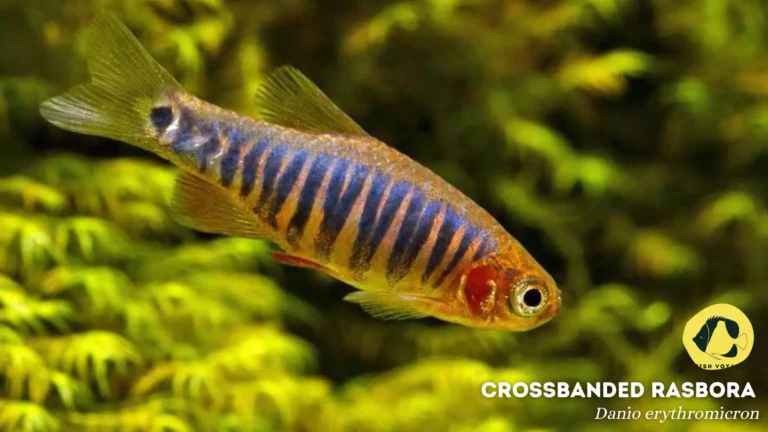


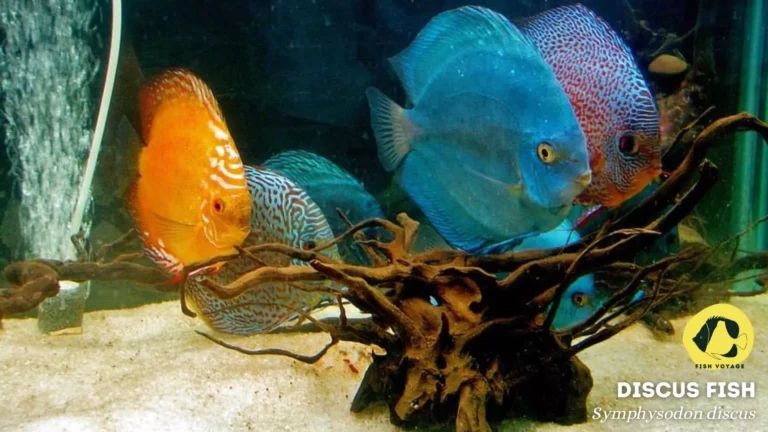
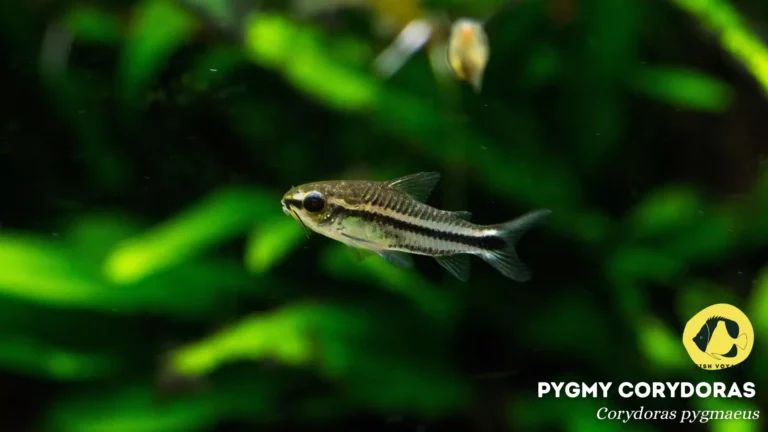

Ive read several just right stuff here Certainly price bookmarking for revisiting I wonder how a lot effort you place to create this kind of great informative website.
What a fantastic resource! The articles are meticulously crafted, offering a perfect balance of depth and accessibility. I always walk away having gained new understanding. My sincere appreciation to the team behind this outstanding website.